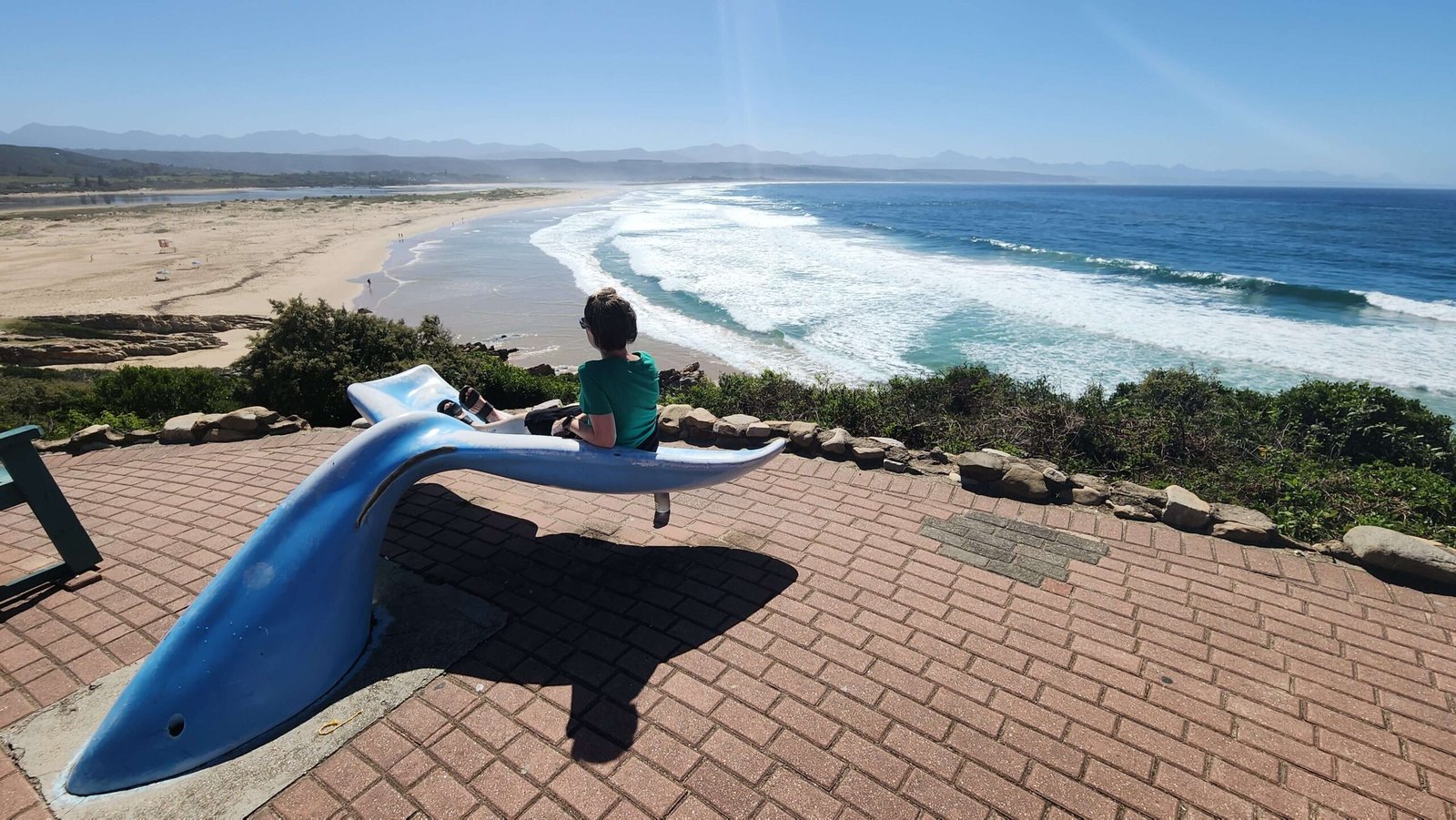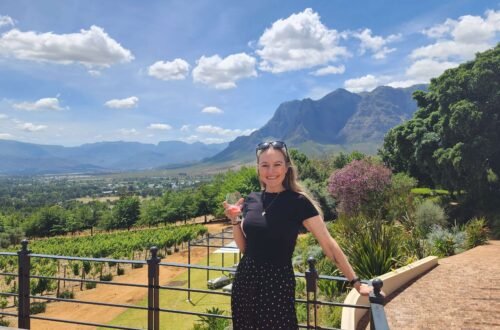
Robberg Nature Reserve Hike: Plettenberg’s Best Kept Secret
Robberg Nature Reserve is situated along the Garden Route, just 8km south of Plettenberg Bay in South Africa. The name “Robberg” comes from the Dutch word “robbe,” meaning seal, a nod to the colony of Cape fur seals that inhabit the area. The reserve’s breathtaking natural beauty is nothing short of spectacular, further highlighted by its status as a designated World Heritage Site.
What’s truly remarkable is that the rocks on the Robberg Peninsula have an ancient origin dating back to the separation of Gondwanaland. There’s also compelling evidence of Stone Age human habitation in some of its caves. When you add in the diverse hiking trails, the mesmerizing views, and the wealth of history, Robberg becomes an absolute must-visit destination along the Garden Route.
The Hiking Trails at Robberg Nature Reserve
There are three main hiking routes of varying lengths and difficulty:
- The Gap: A short 2.1km (30 minutes) simple trail with fantastic coastal views, ideal for a relaxed walk.
- The Witsand Trail: A 5.5km (2 – 3 hours) moderately challenging hike that passes the resident Cape fur seal colony. It then takes you to high viewpoints and over the huge Witsand sand dune.
- The Point: The 9.2km (4-5 hours) circular hike is the toughest trail, leading past the seal colony to the tip of the peninsula. The landscape changes from cliff-hugging paths to sandy dunes and involves some rock scaling.
The 5.5km Witsand circular trail at Robberg Nature Reserve
We decided on the Witsand Circuit, a 5.5km hike that usually takes around 2 to 3 hours, depending on your stops along the way. The gently upwards sloping wooden walkway follows the coastline, treating you to magnificent views of rocky cliffs and the turquoise waters. Keep your eyes open for the seal colony resting on the rocks beneath the cliffs. Actually, you will probably catch the scent and sounds of the seals before you even see them (Trust me, they’re stinky and noisy!).
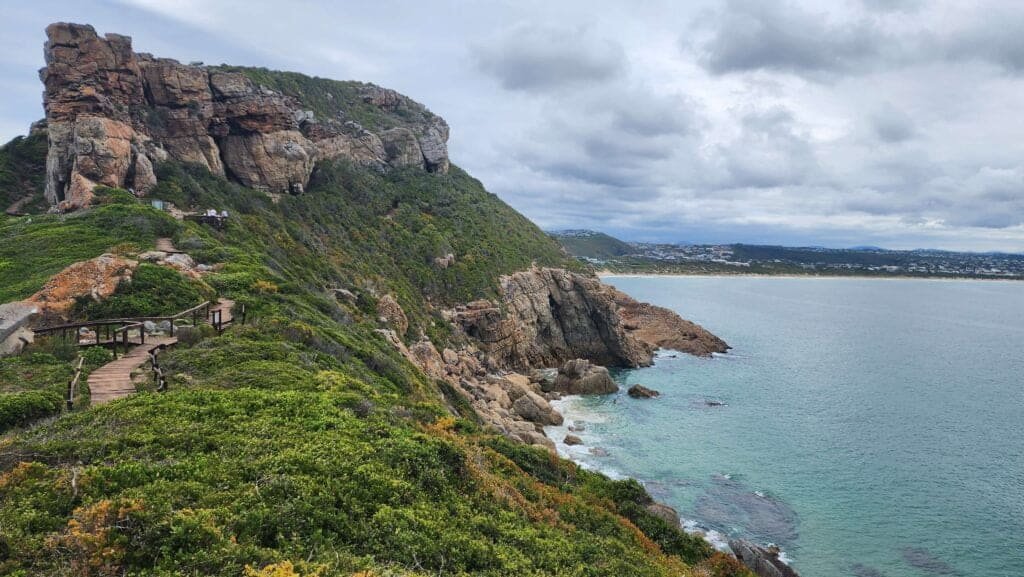
After about 20 minutes of walking, you’ll soon see a little cave with a bench right outside, offering a convenient spot to take a seat and give your legs a break (you will need it before tackling the sandy dune!).

Following the path along the cliff’s edge, the wooden pathway ends and the trail winds its way up across sand to the Witsand Sand Dune. This is probably the toughest leg of the hike, but the views from atop the dune makes it all worthwhile.
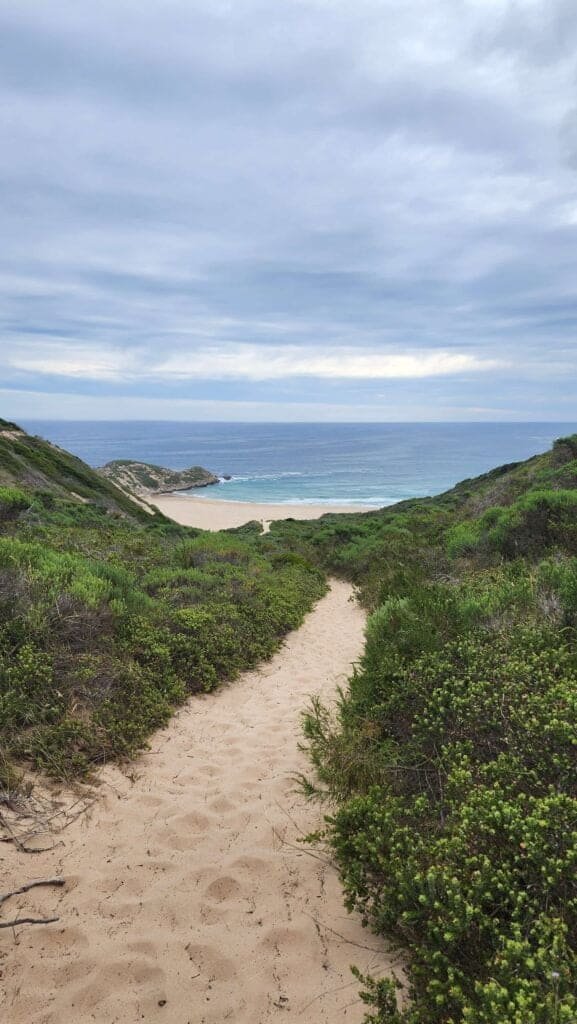
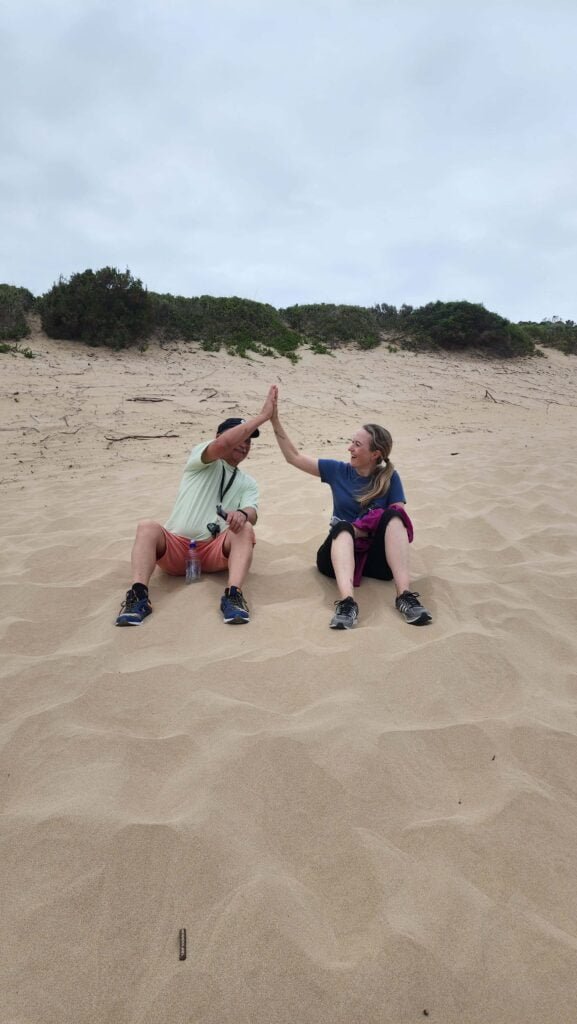

Continue along and down the trail to the beach.

Follow the trail for about another 300 meters along the beach. Then, continue your walk along the rock cliff and walk back to the parking lot.
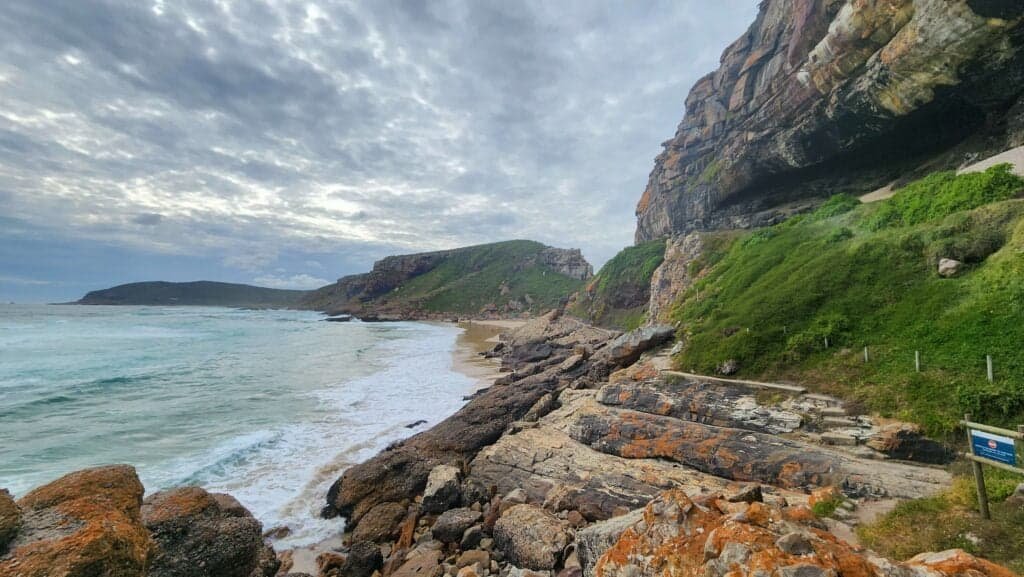
It was an incredible afternoon and is hands down one of my favorite hiking trails in South Africa. If you find yourself travelling along the famous Garden Route, definitely make the time for a stop at this beautiful destination!
For more spectacular hikes along the Garden Route, check out the links below:
- Storms River Mouth Hiking Trails: A Complete Guide (Tsitsikamma)
- Salt River Mouth Hiking Trail (Nature’s Valley)
- St Blaize Trail (Mossel Bay)
Below is a video showcasing our hike through Robberg Nature Reserve.
Practical Tips for Hiking at Robberg Nature Reserve
- Wear comfortable hiking shoes: Take into consideration that the hike involves a mix of cliff trail walking, as well as beach and dune walking.
- Pack essentials: Bring plenty of water, snacks and sun protection.
- Check the weather: The Garden Route can experience rapidly changing weather, so be prepared for the elements.
- Respect the environment: Stay on designated paths, avoid disturbing wildlife, and leave no trace of your visit.
- Plan your timing: The longer Circular trail can take several hours to complete, so start early in the day to make the most of your experience.
- Hike the early morning or afternoon during the summer months (Mid November – End March). It gets very hot during these months, especially on the sand dunes.
General information for hiking at Robberg Nature Reserve
How to get to Robberg Nature Reserve
From Cape Town: Take the N2 highway towards Plettenberg Bay. Next, take the Piesang Valley turnoff. Follow for 3km until you get to Robberg Road. Continue for 4 kilometers towards the Plettenberg Airport. Turn left at the “Robberg” sign and continue until you reach the entrance gate.
GPS Co-ordinates: 34 06 15.30 S 23 23 31.56 E
Parking at Robberg Nature Reserve
Parking at Robberg Nature Reserve is secure. When you’ve paid your entrance fee, drive through the gate to the top of the reserve and look for a parking spot. If it’s full, you’ll need to park outside and walk to the entrance.
Opening and closing times
The Robberg Nature Reserve opening times are 7 am to 8 pm during 1 May to 30 September, with no entry granted after 7pm. Hours change to 8am – 6pm from 01 October to 30 April, with no entry granted after 5pm.
Accommodation and permit bookings Tel: 087 087 8250.
Entrance Fees for Robberg Nature Reserve
Each hiking trail begins at the same point, which is the entrance gate to the reserve. Entry permits may be purchased for R60 per adult and R40 per child at the gate. Visitors can pay via cash or card, and Wild Card holders get in for free. Note: Prices only apply at the time of writing (November 2023). Make sure to check current fees by calling Robberg Nature Reserve at +27 87 087 8250.
Safety
It is very safe. However, do keep an eye out for wildlife. There are quite a few snakes in the area. Also, always remember to lock your car.
Wildlife
While hiking at Robberg Nature Reserve, you’ll observe Cape fur seals, which are the only seals that breed in southern Africa. You can see them on the rocks near the ocean from the high vantage cliff point near the beginning of the Circular and Witsand trails. You might also see the blue duiker, the smallest antelope in the Western Cape. From June to November. Keep an eye out for Southern right whales in the area. The reserve is also home to a number of bird species, namely Orange-breasted Sunbird, Peregrine Falcon, Cape Gull, Swift Terns, White Breasted Cormorants, Cape Cormorant, African Black Oystercatchers, and the African Dusky Fly Catcher.
Explore the Best of the Garden Route: A Three-week itinerary


